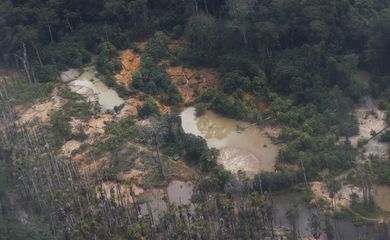Brazil registers 932 conflicts arising from mining activities in 2022

In 2022, Brazil recorded 932 mining-related conflicts, marking an increase from 840 in the previous year. These clashes were identified in 792 locations, showing a 22.9 percent rise compared to 2021 (644). The conflicts involved 688,573 people, most of them indigenous communities and workers.

These statistics are part of a report released on Tuesday (Dec. 12) by the National Committee for the Defense of Territories in the Face of Mining. Through this initiative, the committee aims to elucidate the environmental impacts and rights violations stemming from mining activities in the country.
In 2022, a minimum of 155,983 indigenous individuals experienced the consequences of conflicts arising from mining, with their involvement noted in 141 incidents. More than half of these conflicts (55%) were attributed to interactions with miners. Additionally, international mining companies played a significant role in triggering conflicts, being implicated in 25.7 percent of the cases.
According to the committee's findings, quilombolas were central to 35 conflicts, impacting at least 49,268 individuals. Other groups affected by power struggles of this nature included river dwellers (15,879 people), fishermen (6,498), extractivists (4,241), and squatters (3,091).
The mining-affected groups were primarily indigenous people (15.1%), followed by workers (12.1%) and the urban population (9.7%). The category of small rural landowners (8.3%) came next in terms of impact, the report reads.
The states with the highest concentration of records were Pará (20.2%), Amazonas (19.9%), Minas Gerais (12.9%), Mato Grosso (12.5%), and Roraima (7.4%). Additional data reveals that there were 590 conflicts related to land and 284 related to water in the last year under analysis.
Extreme violence
The survey also sheds light on instances of severe violence linked to mining. In total, there were 45 fatalities, 19 incidents of work in slave-like conditions, seven threats, five death threats, and two cases of child labor.
Throughout this period, the majority of conflicts—107 in total—occurred at the state level. There were also 81 federal conflicts and 33 municipal conflicts.
Despite the frequent disparity in the strengths of the conflicting parties, reactions to the committed violations were documented. The report cites 132 instances of such responses, encompassing demonstrations, public letters, roadblocks, occupations, lawsuits, and other forms of protest.





